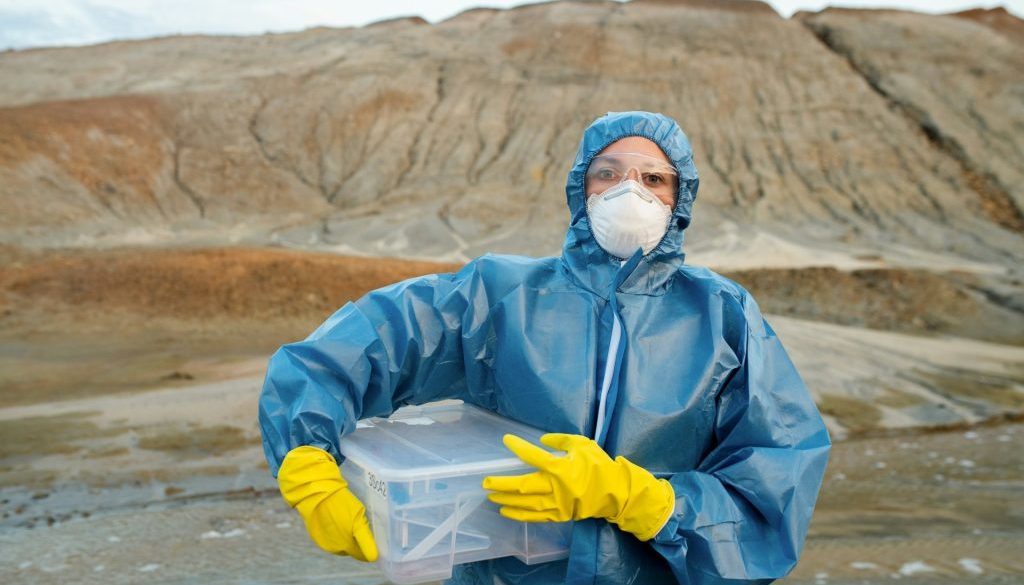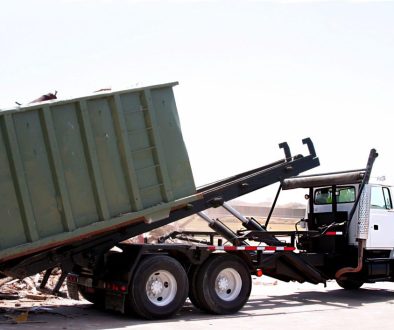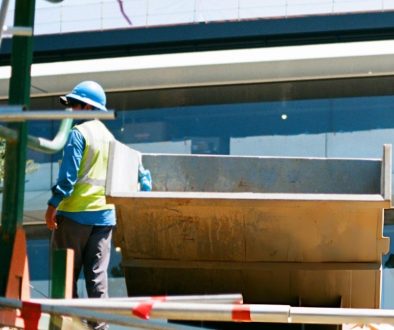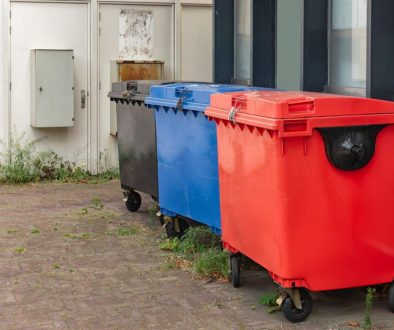Hazardous waste isn’t something most people want to think about, but if you’re responsible for its storage and disposal, you can’t afford to ignore it. Whether it’s leftover cleaning chemicals, outdated oils, or surplus laboratory substances, storing this type of waste properly starts with having well-maintained containers.
In Cheshire, stricter environmental standards and increasing safety awareness have made correct disposal practices more important than ever. One common challenge is knowing when it’s time to replace hazardous waste containers. These containers don’t last forever, and using one that’s past its prime can pose serious dangers. Spotting early signs of wear and making timely replacements helps prevent leaks, accidents, and regulatory issues. Below, we cover how to tell when your containers need swapping out and why staying on top of their condition is worth the effort.
Signs That Indicate It’s Time to Replace Your Hazardous Waste Containers
Hazardous waste containers endure daily use, exposure to harsh chemicals, and all kinds of weather conditions. Over time, they wear out. If they’re not checked regularly, small issues can turn into big health and safety risks. Here are some of the most common warning signs:
– Cracks or splits in the container body, which can lead to leaks
– Rust, particularly around the base, lid, or handles
– Warping or bulging containers due to pressure buildup or chemical degradation
– Damaged lids that no longer close properly or secure the contents
– Lingering smells despite cleaning, suggesting seepage or residue
Containers stored out of sight—behind buildings, in sheds, or tucked at the back of a yard—are often neglected. Make it routine to do a quick inspection every week. Look for visible damage, discolouration, changes in shape, or unusual smells. If you’re finding repeated problems with a particular container type, it may not be suited to the waste you’re storing.
Even cosmetic damage can turn serious quickly. In colder weather, plastic becomes brittle. During warmer periods, closed containers can build pressure. One business near Crewe was using the same plastic drum for years. It had bulged slightly over time, but no action was taken. When left in the sun on an unseasonably warm afternoon, the lid popped off, spilling hazardous liquid into the corner of a storage room. That was not only a cleanup job—it created a health hazard for staff.
If a container shows any of these signs, don’t risk it. Replacement is far safer and usually far cheaper than dealing with a contaminated area or emergency cleanup.
Safety Concerns with Old or Damaged Containers
Damaged hazardous waste containers pose more risk than simply looking untidy or leaking unpleasant smells. When containers fail, they can release toxic, corrosive, or reactive substances into the environment or workplace. This can happen slowly, through a small crack, or instantly if a container collapses or bursts.
Here are some of the risks involved with using aged or faulty containers:
– Leaks into floors, shelving, and surrounding items, creating contamination and damage
– Dangerous chemical reactions when different materials come into contact due to container failure
– Slip hazards or toxic vapours from unnoticed seepage
– Drain and soil pollution, potentially affecting local waterways or green spaces in Cheshire
– Staff or others being unknowingly exposed, especially when labels have faded
There’s also the issue of compliance. Regulations around hazardous waste management are taken seriously in Cheshire. Using unsuitable containers could put businesses out of step with local laws and open them up to fines or other penalties.
Give your team or household clear guidelines on how to handle these items, but remember that good training can only go so far if the containers themselves are unreliable. Cracked lids or weak seals compromise everyone’s safety. By replacing questionable containers quickly, you’re avoiding the type of incidents that lead to bigger problems down the road.
Benefits of Replacing Hazardous Waste Containers Regularly
It can be tempting to hold off replacing a container that “seems fine,” but waiting until it fails often results in greater costs, higher risk, and more time spent fixing issues later.
Consistently replacing waste containers means:
– Reduced likelihood of spills, leaks, or contamination
– Easier compliance with Cheshire’s waste management regulations
– Safer work and storage environments for staff and others nearby
– Less downtime dealing with emergency cleanups or damaged floors and storage areas
– Better organisation and less confusion due to clear labelling and proper sealing
Sturdier, newer containers are usually more efficient. They’re easier to lift, stack, and transport, which makes day-to-day handling less of a burden. New containers also help maintain internal space hygiene by stopping odours and leakage that can affect other stored items nearby.
Some storage improvements also come from design advances. Over time, container manufacturers have made upgrades such as better seals or improved materials that resist sunlight or chemicals. Taking advantage of these helps you future-proof your setup and prepare for changes in regulations down the line.
It’s a bit like replacing tyres before they go bald. You might squeeze a few more miles out of worn ones, but it only takes one rainy morning or a pothole to regret the delay.
Best Practices for Managing and Replacing Hazardous Waste Containers
For businesses and households across Cheshire, staying safe and compliant doesn’t need to be complicated. A few regular habits make a big difference when managing hazardous waste containers.
1. Inspect containers weekly. Do a visual walkthrough to look for damage, discolouration, leaks, cracks, or warping, especially on containers kept outside.
2. Cycle out older containers. Keep track of when each is first used. Replace the oldest ones before they show failure symptoms. A spreadsheet or tag system does the job.
3. Keep labels up to date. Hazardous waste containers should always show clear and legible information about their contents. Replace faded labels as needed.
4. Don’t fill them beyond their capacity. Overfilling leads to pressure problems and split lids. Stick to the recommended levels, especially with expanding waste types.
5. Train everyone who handles them. Staff, maintenance teams, or family members should know how to recognise signs of damage, and who to report it to.
You don’t need expensive management software. It’s often about being consistent and having someone responsible for checking and logging the state of containers.
Best Approach to Managing Hazardous Waste Disposal in Cheshire
Cheshire has embraced a more thorough and safety-first approach to dealing with hazardous materials, especially in how storage containers are handled. Leaving containers to decay in the corner of a warehouse or under a workbench doesn’t cut it any more.
Instead, focus on prevention. This means checking containers before leaks happen, logging replacements, and using trusted services to remove expired or full containers promptly. Whether you’re managing a large site or keeping a few containers in your garage, the aim should be to catch problems before they happen.
Many people try to stretch their resources, thinking they’re saving money. But often, keeping an old container too long leads to extra costs with cleaning, fixing damage, or even breaching local waste handling rules. Professional disposal services in Cheshire often include support around what types of containers to use and when to replace them, which makes the entire process more manageable.
Safer hazardous waste disposal starts with something simple. Check your containers regularly. Replace them when needed. That one habit can prevent a host of problems and make things run far more smoothly. It’s a small action, but one that keeps people safe, protects the local environment, and avoids avoidable messes or penalties.
Make sure your hazardous waste disposal is handled safely and professionally with Enviro Skip Hire. We provide dependable collection and treatment services that help you keep your site compliant and your surroundings protected. Let us take care of the risks so you can focus on running things smoothly.




